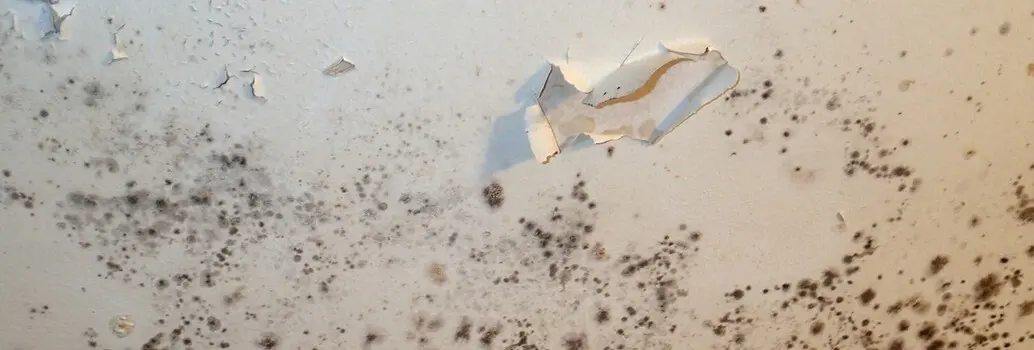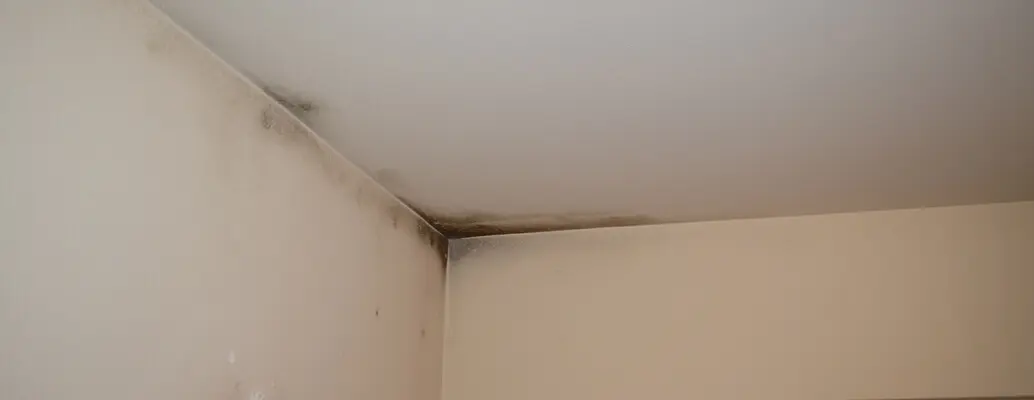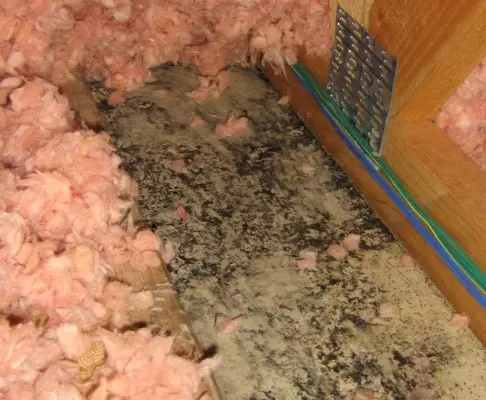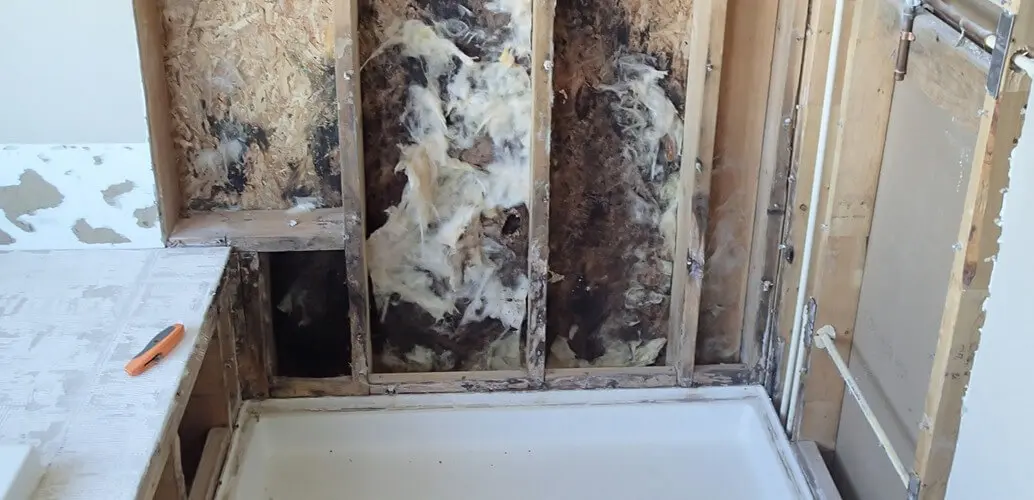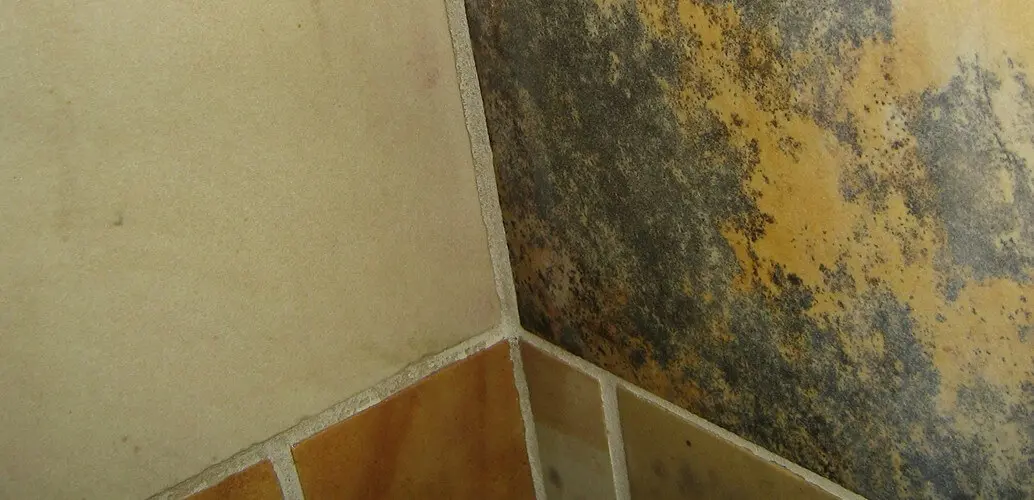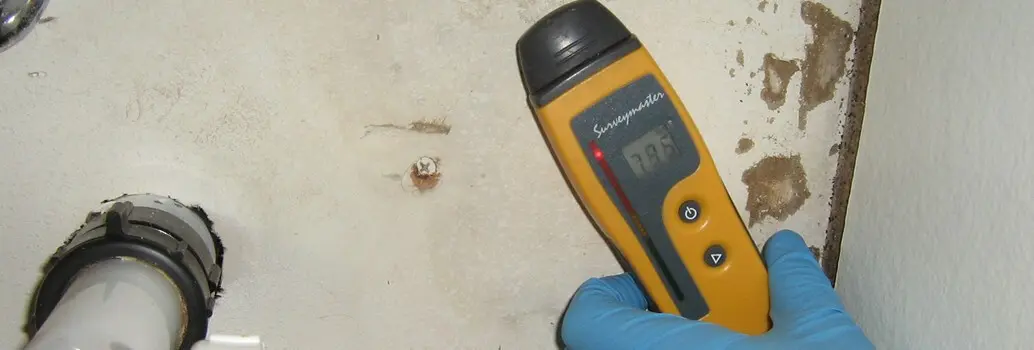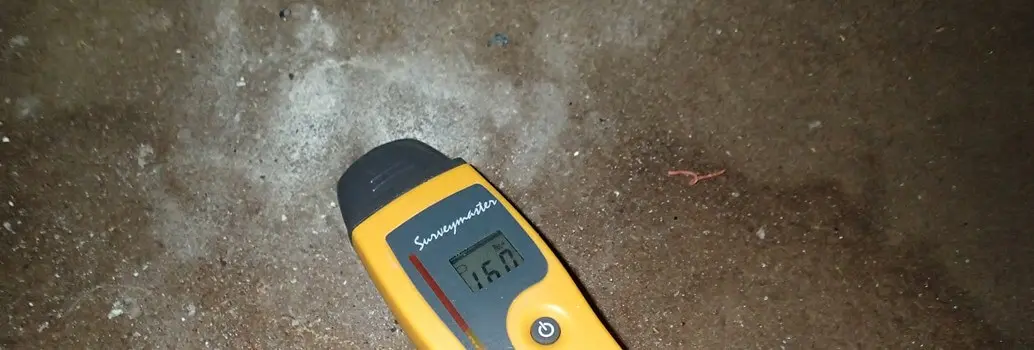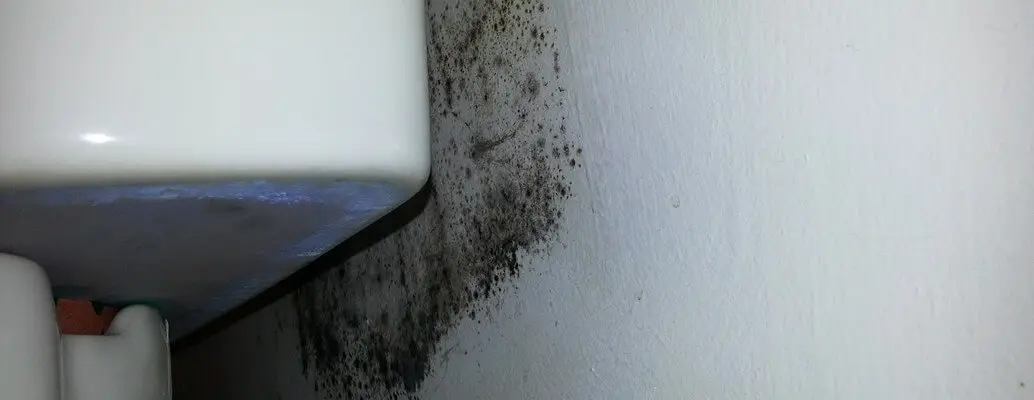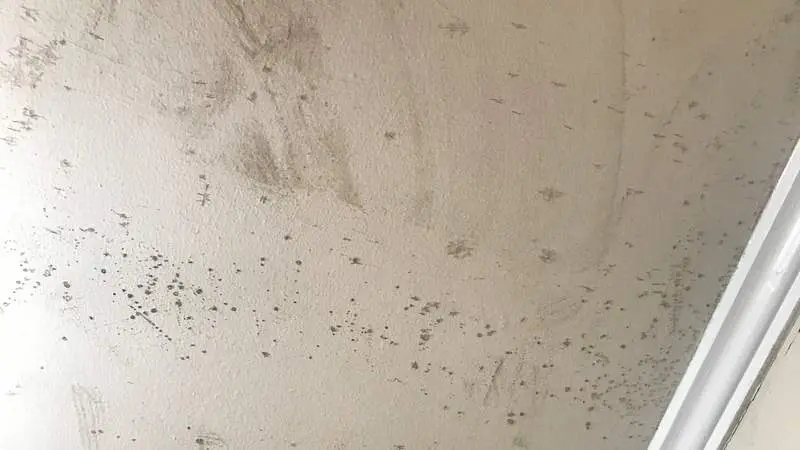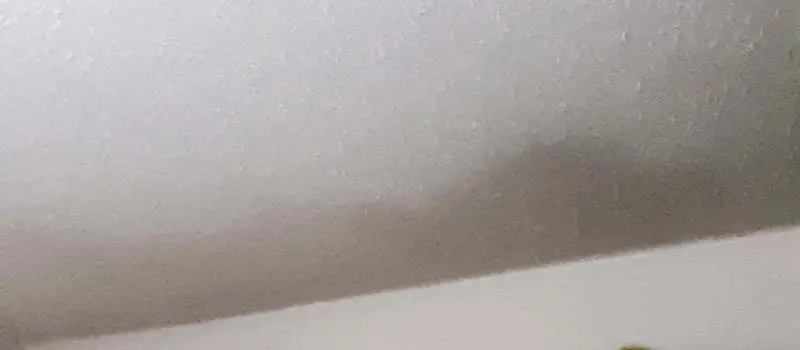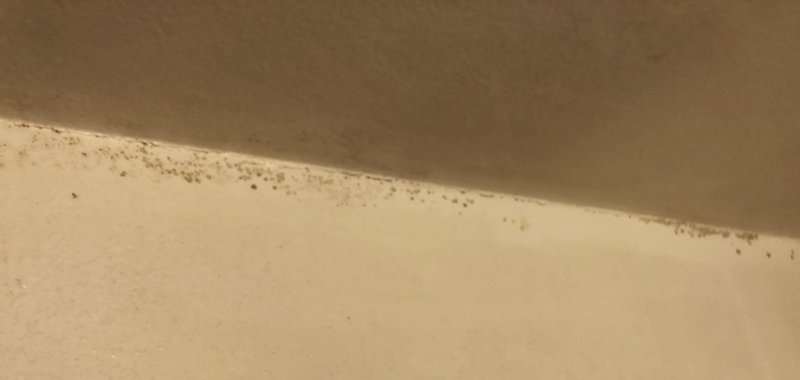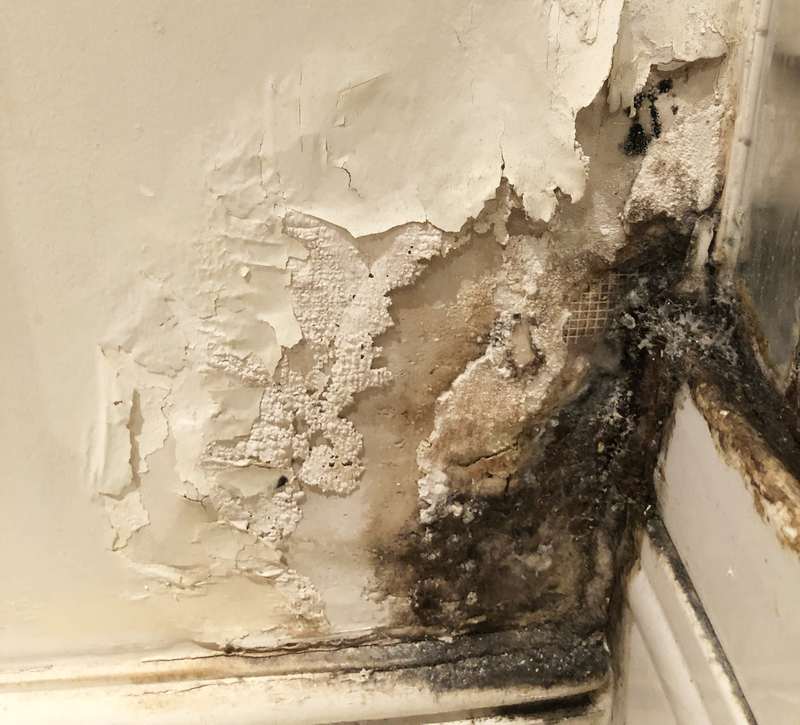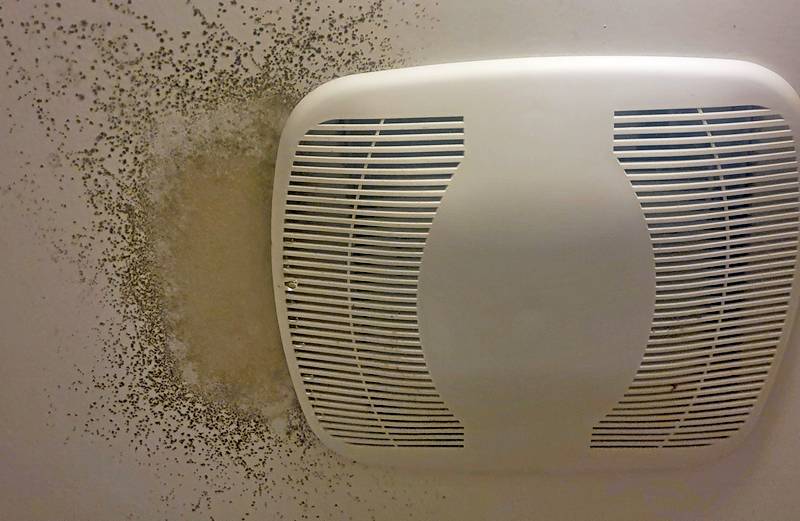Bathroom Mold Growth - Causes & Solutions
Mold growth in the bathroom is one of the most common complaints for homeowners and tenants alike. This isn’t surprising – bathrooms contain just about every conceivable source of moisture. Cracked grout, missing caulking, failed toilet seal ring, high humidity – the list of potential moisture problems is long. Problems can run the gamut from minor surface mold in the shower to major wood rot and structural repairs.
“@context”: “http://www.schema.org”,
“@type”: “ProfessionalService”,
“name”: “Environix – Mold Testing, Mold Inspection & Removal Services”,
“url”: “https://www.environix.com/”,
“address”: {
“@type”: “PostalAddress”,
“streetAddress”: “12303 8th Ave NE”,
“addressLocality”: “Seattle”,
“addressRegion”: “Washington”,
“postalCode”: “98125”,
“addressCountry”: “United States”
},
“contactPoint”: {
“@type”: “ContactPoint”,
“telephone”: ” (206) 880-7592″
}
}
Mold Growth on Bathroom Ceiling
Climates with cool winter temperatures or high humidity are most likely to suffer from mold on the bathroom ceiling. Warm, humid air generated by the shower contacts the cool surface of the ceiling, causing condensation. If the bathroom has a low quality exhaust fan or simply isn’t used properly, the condensation will eventually lead to mold growth. Because warm air rises, the ceiling is often the first surface to experience condensation. This is why mold growth is typically noted on bathroom ceilings long before it accumulates on the walls.
If left unaddressed for an extended period of time, the moisture and mold growth can eventually degrade the dry wall and cause the paint to bubble.
Mold growth in the corners is often due to a combination of poor ventilation and missing insulation in the attic above. This creates a cool surface during cold weather, which increases the likelihood of condensation and mold growth.
Verifying the cause of mold on the ceiling
There are two ways to prove the cause of the mold growth. If you have access to the attic area above the bathroom, simply pull back the insulation. If the backside of the sheetrock (the side facing the attic) shows signs of mold growth – you’re definitely dealing with a roof leak. See example below.
If you don’t have access to the attic, or simply don’t like the idea of crawling through insulation, you can use a moisture meter. In the vast majority of cases, a moisture meter will not pick up moisture due to condensation. Therefore, if the meter indicates elevated water content, you’re likely looking at a roof leak. Clearly, this needs to be performed after a recent rain event.
Common solutions for ceiling mold growth
- Run the exhaust fan for at least 30 minutes after a shower or bath.
- Paint the bathroom ceiling with a high sheen/gloss paint. Matte and other low sheen paints absorb much more moisture, which in turn leads to mold growth.
- Insulate the attic space above the bathroom to prevent excessively cold surfaces on the ceiling.
- Mold growth due to condensation can often indicate elevated mold spores throughout other areas of the homes. Mold testing can be a helpful technique for determining whether this has occurred.
Mold Growth on Shower Surround / Tile
Showers can fail in 3 ways: supply line, vapor drive or a failure of the shower surround. Supply line issues are relatively uncommon, because they are noticed before major damage can occur. They tend to cause major, catastrophic leaks or none at all. Drain line leaks are slow enough to avoid detection, but substantial enough to cause rot and mold growth.
This is compounded by the fact shower surrounds are made of durable materials such as tile and fiberglass. Quite a bit of damage can lurk behind the tile before you’ll see an outward indication.
Nearly every home will experience mold & mildew in the shower at some point. Thankfully, mold growth on the bathroom shower tiles does not typically indicate a major health or structural problem. We’ve conducted many air quality tests within bathrooms suffering from shower tile mold and never found an effect on the IAQ. Prevention, of course, is the best remedy. We’ve found 3 methods that dramatically reduce mold growth on shower tiles. Squeegee after each shower use, run the bath fan for 1 hour and properly seal the grout.
Beneath the Bathroom Sink
Mold growth can occur under a bathroom sink in 3 common scenarios. First, mold growth can appear after a leak from the water supply lines or the drain pipe. Typically a leak in the supply lines will cause mold growth and water damage to the bottom of the vanity/cabinet. A leak in the drain line is less common, but can occur in the cabinet or in the adjacent wall.
Second, mold can occur due to condensation. Typically this happens in a home with poorly or completely uninsulated exterior walls. These walls remain cool, while the interior of the home is heated. This temperature differential creates a surface below the dew point, and thus, condensation occurs. A moisture meter is helpful for differentiating condensation based mold growth from leaky plumbing. Except for extreme circumstances, the condensation based mold growth will not exhibit a measurable level of increased moisture in the wall. However, mold growth from a leaky pipe certainly will.
But… looks can be deceiving. Damage from old leaks can leave stains that can appear actively wet. In the image below a moisture meter shows the moisture content of the cabinet is normal.
Mold growth can also occur due to water seepage at the perimeter of the bathroom sink. Unless a sink is well sealed, splashing water can seep between the sink and the counter top material. Over time this will damage the material beneath the counter top, leading to delamination and mold growth. Undermount sinks tend to fair better because the splashed water tends to flow directly into the sink.

Notice the damage to the plywood beneath the countertop.
Toilet Mold Growth Issues
Failed toilet seal
While not an indoor air quality concern, failed toilet seals can cause significant wood rot. Look for signs of staining on the adjacent flooring. Also, feel for sponginess or undue flexing in the sub floor surrounding the toilet. If the toilet is located above a crawlspace check the area for signs of leakage.
Mold on the underside of the toilet tank
Occasionally, toilets will suffer from condensation on the back and bottom side of the tank. The vast majority of toilets are constructed from porcelain, a durable, non-staining, non-porous material. These qualities not only make the material perfect for handling life’s biological unpleasantries, they also make the material highly resistant to mold growth. Due to this, mold growth on toilets is unusual.
For growth to occur, it must find another food source – settled dust. Often invisible to the naked eye, a thin layer of dust settles upon every surface of a home, including vertical and even inverted surfaces. This microscopic layer of dust provides sufficient organic material to propagate mold growth.
Remember, mold growth requires both a food source and available moisture. Just because the settled dust has provided a food source does not necessarily mean that mold growth will inevitably follow. Moisture must be present as well. On a toilet this primarily occurs through condensation. When the shower is used, warm, humid air is introduced into the environment. This moisture laden air hits the cold toilet (cooled by the water) and condenses. If the condensation is severe, drips will form and damage the floor below.
Mold growth on the wall behind the toilet
The same interactions that cause moisture and mold growth on toilets can also lead to mold growth on the adjacent wall. Typically this occurs when the cold surface temperature of the toilet cools the temperature of the wall directly behind the toilet. Once the wall temperature drops below the dew point, moisture condenses and mold growth ensues.
Cleanup?
Not easy. If mold growth occurs on the wall, it is because the distance between the wall and the toilet is very small. Often the distance is less than 1”, leaving little room to insert a scrub brush, rag or other cleaning utensil. A tooth brush can work well, but as one can imagine, the work is tedious. In cases with severe mold, the toilet must be removed to provide access.
Moisture & Mold Damage to floor beneath the toilet tank
If condensation is severe, water will drip from the holding tank and saturate the floor. The level of damage, if any, depends entirely on the flooring material. Well sealed tile will withstand constant water exposure. Hardwood or laminate flooring will fail relatively quickly.
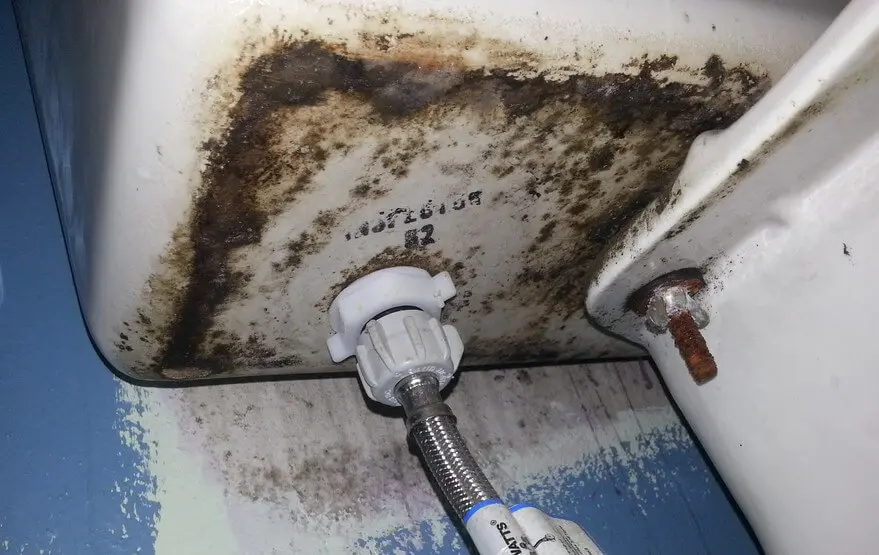
Mold Under Toilet
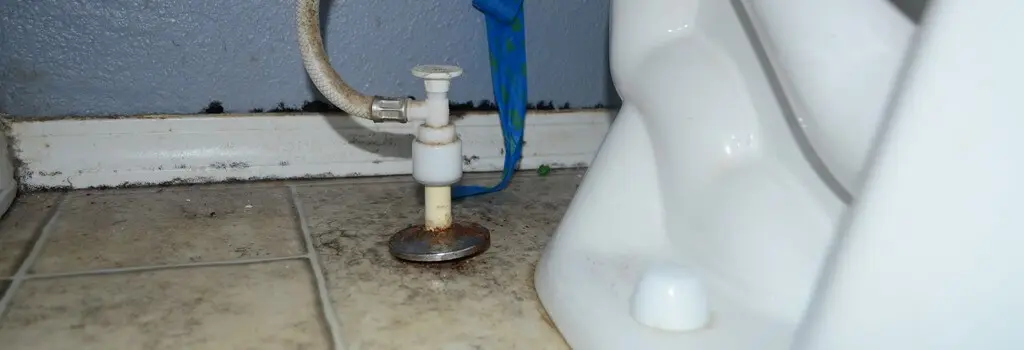
Mold Under Toilet on Flooring
Preventing Condensation on the Toilet
In all three cases described above, condensation is the primary cause of mold growth. Thus, prevention must hinge upon preventing or lowering the condensation. If you have a working bathroom fan already installed, the solution is simple. Run the fan. If necessary, a push button timer with 20, 40, 60 minute increments can help ensure proper ventilation occurs. Bathroom fans often lack sufficient power. You’ll know this if you’re still seeing condensation even when running the fan for 60 minutes after each shower usage. Time for an upgrade.
If your bathroom does not have a fan currently installed, your options are much more limited. Opening the window can help, but this isn’t comfortable in January. And realistically, most people won’t keep the window open long enough to achieve proper ventilation rates.
Project Report > Mold Inspection for a Bathroom
Reason for inspection:
- Client is experiencing significant allergy problems, primarily when sleeping inside his room. Client feels better when sleeping out in the living room. No apparent source of contaminates.
Summary of concerns:
- Excessively high relative humidity levels inside the home.
- Poor ventilation throughout the home.
- Elevated moisture levels noted in flooring in front of rear french doors.
- No ventilation fan in bathroom.
- Visible mold growth noted on bathroom walls due to excessive condensation.
- Elevated moisture levels noted in flooring around toilet / in front of tub.
- Water damage noted around window frame inside shower surround.
LOCATION: Hall Bathroom
- During the inspection we found inadequate ventilation (missing exhaust fan), visible mold growth on wall & ceiling, water damage on the window trim, mold & water damage from missing grout in the back splash, elevated moisture in the subfloor and lastly, water pooling in the crawl space from plumbing leak.

Light to Moderate Mold On Bathroom Ceiling – No Fan Present
Ventilation
- The bathroom does not have any exhaust ventilation currently installed. A window is present, but this is inadequate for proper moisture removal. Bathroom windows are effective at reducing your energy efficiency and not much more. Additionally, even if a bathroom window was functioning well at the removal of moisture, most people lack the discipline to open a window in the middle of winter.
Bathroom Mold Growth

Mold growth noted on bathroom wall
- The lack of proper ventilation doesn’t always lead to visible mold growth. Many factors effect the actual actual growth of the mold: quality of the paint surface, level of insulation, etc. However, this bathroom clearly suffers from visible mold growth on the upper walls and ceiling. Thankfully, this type of mold growth is condensation based, which often can be cleaned and removed without removing the sheetrock itself. This is due to the fact that airborne moisture (which occurs when an exhaust fan is missing) causes mold growth only on the side facing the humid conditions. For example, if we were to look at the backside of these moldy walls, they would undoubtedly have no mold growth whatsoever. Additionally, this type of bathroom mold growth typically does not cause elevated mold spore levels throughout the home.
Dampness in Bathroom Floor
- Moisture meter testing indicated elevated dampness in the flooring materials adjacent to the bathtub and toilet. Usually this is due to a failure of the wax ring on the toilet or water pooling from shower usage. In this case, the area of dampness is directly between the two potential culprits, making a final assessment difficult. Often the cause can be differentiated by inspecting the area from the craw space. However in this case, the crawlspace didn’t yield any obvious clues.
- Dampness in the bathroom floor is more of a structural issue than an air quality problem. Because the flooring does not allow air flow to pass through, mold spores cannot migrate into the conditioned air space.
Bathroom Shower Windows?
- Anytime you mix heavy water exposure and manufactured wood products you’re asking for trouble. As the photo indicates, moisture exposure has lead to cracked joints, mold growth and swelling. Though not likely to cause an indoor air quality issue, these construction defects can lead to expense wood rot within the wall cavity. If you insist on having a window within the shower enclosure, case it completely in impervious materials such as tile, granite, etc.

Mold Around Master Bathroom Windows
- Though it is difficult to determine from the photograph, the junction of the back splash and the tile counter is missing grout or sealant. This typically isn’t a major issue unless the counter is sloped to the rear. In this case however, the moisture has lead to mold growth on the sheet rock wall behind the vanity.
Laboratory Results:
- The mold and IAQ problems were not confined merely to the bathroom. Moisture issues and highly elevated RH levels were found throughout the home.
*Heads up – I earn a small commission on sales through Amazon links. This helps cover the expense of running the website (and answering your questions!)
Got a question? Ask it here and we'll post the answer below
I don't know if the attic has insulation or not, or if the lack of use of the bathroom fan for long enough may have caused the problem or what caused the problem. But now I am wondering if this condensation type drip when turning on the fan, and the left over "black" on the small bit of insulation on the fan vent need to be addressed and how. The building's maintenance man says it is nothing. He also said the mold on the bathroom ceiling must have been there long before the roof leaked and was therefore our fault. My tenants (and they are honest people) have said that it came in the few weeks around the time of the roof leak after a huge storm. I want to understand and fix this. The bathroom has been remodeled. There is just this tiny drip after turning on the exhaust after the unit being vacant after a week or so. (Yes, the air conditioning has been on.) Any comments on this would be appreciated. Thanks for your valuable information on this site.
Dripping from the bathroom exhaust fan is typically due to an uninsulated exhaust duct. During the winter, the warm, moist air from the bathroom travels up the ducting and hits the cool attic air. Water condenses on the inside of the ducting and drips back down through the fan assembly. If the attic is accessible, you can either replace the ducting with pre-insulated flex duct or wrap the existing duct with extra insulation.
Often these drip issues only occur after the fan is turned off. While running, the air is moving too quickly to allow for condensation. Replacing the exhaust fan with a constant flow unit, such as a Panasonic WhisperGreen will solve this problem.
If the dripping is occurring in the summer and the building is located in a hot/humid climate, the dripping might be due to the cool, air-conditioned air from the home hitting the warm attic. In this scenario, the condensation occurs on the outside of the exhaust fan and drips down the exterior of the duct. Eventually it reaches the fan and drips into the bathroom.
Is mold in shower window and floor covered by insurance?
In most cases, no. Insurance typically only covers issues considered “sudden and catastrophic”. This includes stuff like broken pipes and roof leaks, but not mold due to slow, long term issues.
Recently been noticing some mold growth right outside my bathroom. My bathroom doesn’t not have a vent/fan, but does have the vent on the floor for Ac/heat. I initially thought a leak with the roof, but checked and didn’t see anything. There is insulation present but looks old. I’m wondering if I need to replace the insulation or install a vent/fan in the bathroom..? I was just going to try the vent/fan in the bathroom because I figured the moisture/humidity was coming from the steam after a hot shower, but I cleaned the ceiling and left the house for a week and cake back and the ceiling was molded again. Help would be appreciated!
Good questions. Based on the photo, this is almost assuredly condensation based mold growth. I highly recommend installing an exhaust fan. It’s really the only way to reliably prevent the mold growth from reoccurring. If you live in a climate with cool winters, install a Panasonic WhisperGreen fans. These units run continuously at partial speed and can help lower the humidity throughout the entire home. Make sure you fully duct the new fan through the roof to the outside air.
Regarding the insulation, the age of the material does not matter. The key factor is the r-value and depth of the insulation. When in doubt, install some extra insulation above the bathroom. It’s cheap and can be very effective.
I have noticed mold in my bathrooms with I clean. A few months ago I notice that the on the edge of my room near the window there were two gray color spots. The spots have grown large and I am noticing smaller spots developing along the edge off my other window. I have had noticed condensation on the windows and have have to clean small amounts of mold from the window. I am afraid that those spots on the ceiling maybe mold. I am scared and dont really know what to do. I am worried about the cost and will I be able to afford the repair. Please help.
This is likely due to condensation buildup on the ceiling. A lack of ceiling insulation and a weak or missing exhaust fan are the primary contributing factors. Install a constant flow exhaust fan (see answer above for more info) and increase the ceiling insulation. The mold growth can be cleaned with a regular detergent and repainted.
Bathrooms are exposed to high amounts of moisture. Using an exterior grade paint can help reduce the likelihood of regrowth. If the problem returns after these changes, rent or buy a moisture meter and test for elevated moisture content in the discolored area.
My bathroom has one small ceiling fan and no windows. I have noticed mold growth in shower and shower walls. Are these all signs of mold?
Yes, this looks like mold growth. The quantity is very small and does not warrant professional remediation. Clean the area and repaint. To prevent regrowth, increase the bath fan usage. If the fan is in good condition and relatively quiet, install an Air Cycler switch and program it to run 20 minutes every hour. If the fan is old/noisy, replace it with a Panasonic WhisperGreen fan. These units run continuously at low speed and provide excellent ventilation.
This has happened to our wall next to the shower tray - can this be a leak from the shower? also the bathroom fan seems to be on and off working so ventilation not great.
This is due to a liquid water issue, not ventilation (though it’s still worth replacing your bath fan). In most instances, damage like this is from a failure of the shower door seal. Occasionally, the pan itself can crack and leak, but this damages the floor more than the wall.
I recommend cutting out the damaged sheetrock. Once it is open and clean, direct the shower head at different parts of the wall and door to determine the specific site of the leak. Based on the damage, I expect you’ll need to replace the shower door. At a minimum, you’ll want to recaulk the joints where the door/glass meets the shower surround and pan.
I just noticed this mold growing around one of my bathroom vents. This vent is above the toilet in the water closet of my master bathroom. There is also another vent in the main area of my master bathroom and I can't see any visible mold around that vent. Any idea of what has caused the mold to grow around the vent in the water closet?
In most cases this is due to missing insulation above the ceiling. This leads to condensation and mold growth. However, if you look carefully, you can see water droplets forming on the left edge of the bath fan.
This occurs when the fan ducting is not insulated and the fan is not powerful enough to quickly move the air completely out of the house. The warm humid air hits the cold ducting (in the attic typically) and condenses. This drips back down the ducting and saturates the ceiling, leading to mold growth.
Either insulate the existing ducting or replace it with insulated flex duct. I also recommend replacing the bathroom fan with a Panasonic WhisperGreen. These units are quiet and powerful and provide excellent ventilation.

